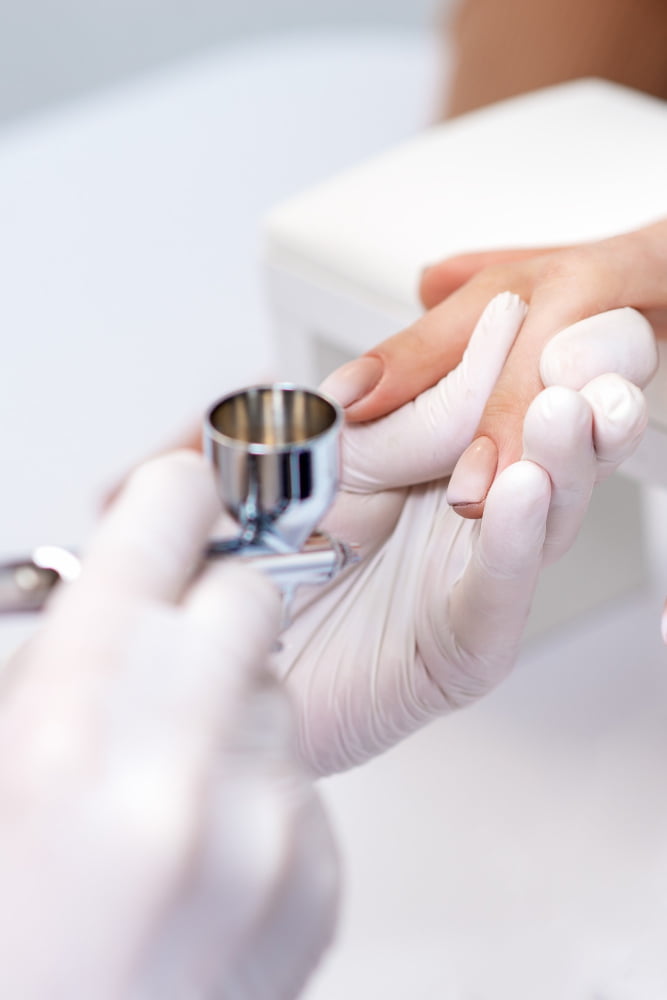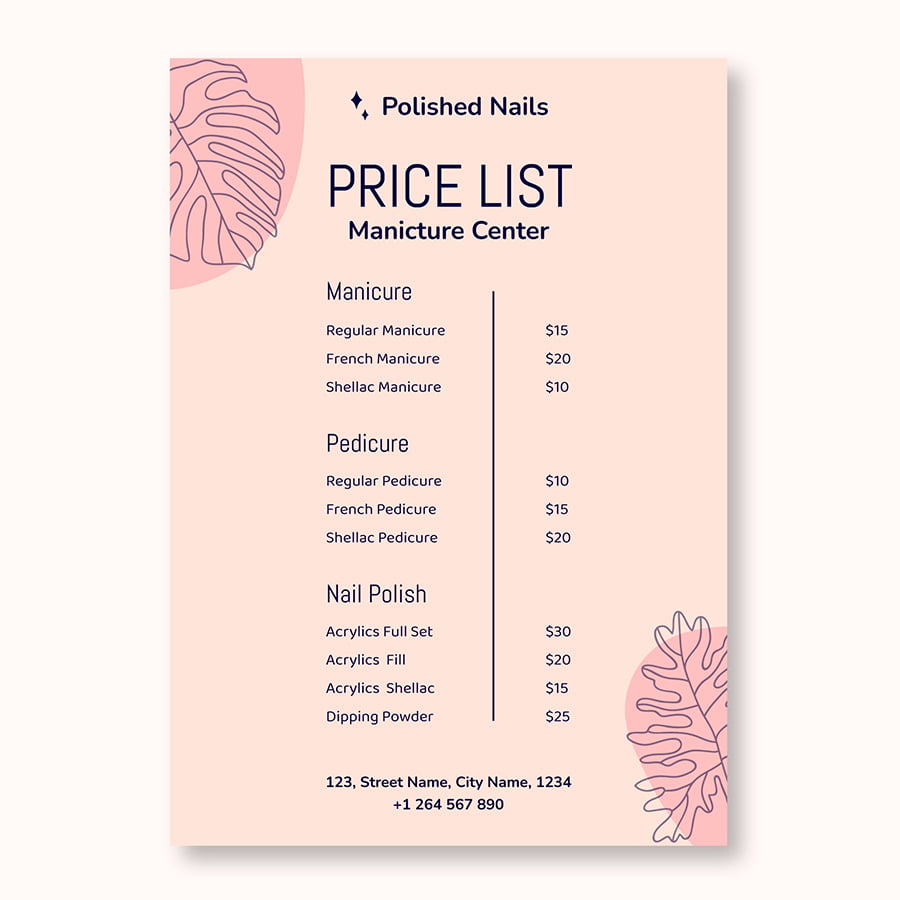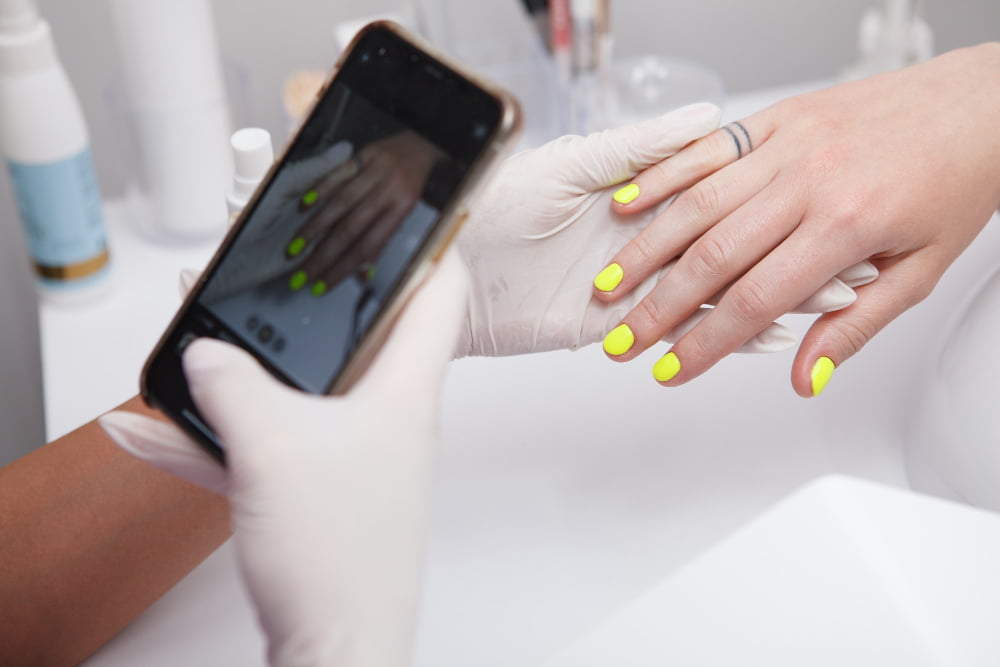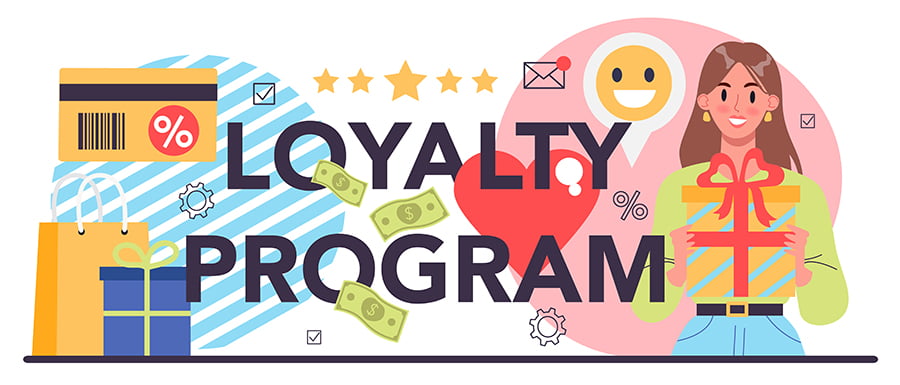Delving into the intricacies of a nail salon business model can provide valuable insights for those looking to break into this profitable industry.
The nail salon business model is a unique blend of service provision and retail, offering both nail care services such as manicures, pedicures, and nail enhancements, as well as products like nail polish and care kits.
Success in this industry hinges on understanding the intricacies of this model, from selecting the right location, hiring skilled technicians, pricing services competitively, and stocking popular and quality products.
This article delves into these aspects in detail, providing a comprehensive guide on running a thriving nail salon business.
From startup costs, revenue streams, to effective marketing strategies, you’ll find all the information you need to start and scale your nail salon business.
Key takeaways:
- Understanding the nail salon industry: trends, challenges, and opportunities
- Identifying the target market: demographics and preferences
- Conducting competitive research: strategies, prices, and services
- Defining the market position: unique selling proposition, quality vs price, expertise, brand identity, customer experience
- Formulating a detailed business plan: market analysis, organization and management, services and products, marketing and sales strategy, financial projections.
Analyzing the Nail Salon Industry

Some essential factors to consider in the nail salon industry include understanding prevailing trends, essential market challenges, opportunities, and growth predictions. This sector boasts a wide array of service offerings, spanning manicures, pedicures, acrylics, gel polishes, and nail art.
Insights from beauty industry reports show an upward trend due to increased consumer focus on appearance and grooming. However, it’s also important to acknowledge obstacles that could hinder progress, such as stringent health and safety regulations, high competition, and cyclical fashion trends.
These insights form a vital foundational understanding of the industry, necessary to navigate the market dynamics seamlessly.
Identifying the Target Market for a Nail Salon

A nail salon’s target market generally encapsulates a wide customer base owing to the universal appeal of the services. However, narrowing down to a specific demographic helps formulate effective marketing and business strategies. For example, individuals with a certain level of disposable income, usually above-average, could be the primary audience. Age-wise, those in the bracket of 20 to 50 often invest in regular beauty regimens, such as nail upkeep.
Consider also gender perspectives. While largely perceived as a female-focused sector, recent years have seen a surge in male grooming culture, which a salon should capitalize on. Consistent with cultural shifts, inclusivity should be a brand’s mantra, ensuring services cater to diverse gender identities and avoiding marketing that targets just one gender.
Understand the potential clients’ geographical location as well. Are they city-dwelling career individuals requiring express services, or suburban households that can afford lengthier, more luxurious treatments? Recognize, too, the lifestyle segment – fitness enthusiasts, for instance, may prefer durable, practical nail options.
These variables will drive segmentation, consequently influencing service offerings, pricing, location, and promotional strategies. It’s the process of knowing who to cater to and how best to do it to ensure maximum profitability while meeting your customers’ needs.
Competitive Research in the Nail Salon Market

There’s no doubt that the nail salon market can be fiercely competitive, which makes research absolutely vital. Look into the strategies, prices and services of both local and large chain salons to gauge current trends and customer expectations.
Start by identifying top players within your locale and observe their business practices. Are they offering unique services not offered elsewhere? What kind of promotions do they run? What price points are they using?
Make sure you also keep tracks of salons that are not doing well, which can serve as a reminder of what not to do.
Online platforms such as Google and Yelp can be beneficial for understanding clientele feedback. Look at reviews and ratings to determine what customers love and despise in existing salons.
Recognize what sets your competitors apart. These could be extended business hours, digital booking services, or even their decoration style. All of these can provide valuable insights into what potential customers are looking for in a nail salon.
Remember that research is not a one-time task in this ever evolving industry. Continue to study your competitors periodically to stay updated and incorporate effective innovations into your own business.
Defining the Market Position of Your Nail Salon

Having determined your target market and researched competitors, the next step involves carving out your unique position in the nail salon industry. To define your own market position, consider these critical factors:
1. Unique Selling Proposition (USP): What sets your salon apart from others? This could be anything from offering only vegan products, providing exceptional customer service, or specializing in intricate nail art designs. Your USP should resonate with your target customers and give them reason to choose you.
2. Quality vs Price: Determine where you stand on the spectrum of quality versus price. Are you offering premium, top-of-the-line services at a higher price, or are you aiming for the budget-friendly market with quality yet affordable treatments?
3. Expertise and Specialization: Are you or your staff experts in a particular field or type of service, for example, gel manicures, acrylic nails, or, perhaps, natural nail care? Specialization can dictate your market position and attract a specific set of clients.
4. Brand Identity: Your salon’s aesthetics, overall vibe, and the way it communicates with customers constitutes your brand identity. A cohesive and distinctive brand identity aligns with your market positioning and helps you stand out.
5. Customer Experience: Besides the salon services, the overall customer experience you provide, including the salon ambience, staff interaction, service speed, and aftercare advice, also determines your market position.
By carefully evaluating these factors, you may create a unique market position that’s not only competitive but also sustainable in the long run.
Formulating a Detailed Business Plan for a Nail Salon

A comprehensive business plan is pivotal to the success of your nail salon. Begin with a summary of the business, clearly stating what your salon will offer. Include your salon’s unique selling points that set it apart from the competition.
Next, delve into your market analysis. Highlight demographic information for your target clientele, sector trends, competition benchmarks, and how your salon can fill specific gaps in the market.
The organization and management section ought to detail the salon’s legal structure, key executives, and their roles. The qualifications and experiences of the salon personnel should be emphasized.
In the service line section, enumerate specific services and products that your salon will offer. Describe the benefits and features of these services.
Outline your marketing and sales strategy. Provide an in-depth breakdown of how you’ll attract and retain clients, unique promotions, and how you’ll position your salon within the competitive landscape.
Jumping to the financial projections, sketch out anticipated revenue and expenses for the first few years. Show a clear pathway to profitably with a robust budget and revenue projection plan.
As a final point, clearly spell out your funding request if you are seeking outside financing. Detail how potential investors will benefit or get a return on their investment.
Remember, your business plan should be a live document. Regularly update it as your business grows and the market evolves.
Developing a Mission Statement for Your Nail Salon

A mission statement, a succinct expression of your salon’s core values, should be crafted with care. It’s crucial in conveying your salon’s unique selling proposition and the value you bring to clients.
Typically, a mission statement answers three key questions:
- What services does your salon offer? Weave in your niche, whether it’s specialty nail art, eco-friendly practices, or high-end luxury services.
- Who is your target customer? Perhaps it’s busy professionals seeking quick services, or clients who value organic, non-toxic products.
- What makes your salon special? This part differentiates you from competition. Maybe it’s unmatched customer service, an exclusive relaxing atmosphere, or a renowned team of technicians.
Reflecting on these points will help create a compelling mission statement, shaping the trajectory for every decision made in the business.
Setting Up Services and Products for Your Nail Salon

High-quality services and a range of curated products lay the foundation of a successful nail salon business. Here’s a quick guide to achieve this:
1. Diversified Service Menu: Offering a variety of services ranging from basic nail care to advanced nail art and therapeutic treatments can attract a wider customer base.
2. Top-tier Products: The quality of products used directly influences customer satisfaction. Incorporate premium products along with budget-friendly alternatives to accommodate all clients.
3. Trends and Innovations: Regularly updating your services to align with the latest trends and nail art techniques keep your salon relevant. This could include techniques such as gel nails, nail extensions, and innovative nail art designs.
4. Special Packages: Create special service packages like bridal, seasonal, or festive. These can significantly boost customer engagement and increase sales.
5. Customer Safety: Prioritize sanitation and hygiene to ensure customer safety. Use sterilized tools, disposable nail files, and follow safe pedicure practices.
6. Training: Regularly train your staff to keep them informed about industry advancements, emerging trends, and handling high-end products. This will enhance the quality of services provided, thus improving overall customer experience.
Remember, the range and quality of services you offer are representative of your brand. Making strategic decisions in this area can significantly contribute to the success of your nail salon business.
Determining the Pricing Strategy for Nail Salon Services

Crafting a sustainable pricing strategy requires an understanding of both industry standards and your specific costs. First, evaluate the market rates for different services ranging from basic manicures and pedicures to more specialized treatments like nail art and extensions. Research what your direct competitors are charging, but don’t base your prices solely on theirs.
Next, calculate your costs. Look at everything from overheads such as rent, utilities, and salaries, to direct costs of products and supplies. Pricing must cover these expenses while still ensuring profitability.
Always consider the value you’re providing. If your salon offers a unique experience, high-end products, or extraordinary customer service, it can warrant higher pricing than a basic salon.
Remember, while it’s important to be competitive, don’t underprice your service to win customers, as this can lead to business loss in the long run. Keep your prices flexible for changes in cost, competition, and market conditions.
Finally, communicate your pricing transparently to avoid misconceptions about your services’ value. Whether it’s a detailed menu in your salon or clear pricing on your website, ensure customers understand what they’re getting for their money.
Choosing an Ideal Location for Your Nail Salon

Selecting the right site is crucial, as it has a major impact on the visibility and success of your salon. Look for a location with high foot traffic to naturally attract customers. Sites near other beauty and wellness businesses, shopping centers, and cafes or restaurants can be particularly beneficial, as they already attract your target audience.
Consider also the size of the space you require, parking availability, local regulations and zoning restrictions, rent costs and potential for growth. A street-view storefront can help increase your salon’s visibility significantly.
Accessibility is another key factor. Make sure the location is easy to find and reach, both by car and public transport. It will increase customer convenience and attract a broader demographic of clients.
Lastly, careful examination of local competition is a must. If there are many nail salons in the area, it might be more challenging to cut through the noise and establish a strong customer base.
Legal Requirements: Obtaining Licenses and Insurance for a Nail Salon

Compliance with law is a paramount part of starting any business. In the case of a nail salon, specific licenses are required. Primarily, you’ll need a salon license which is issued by the State Cosmetology or Beauty board. Its acquisition involves an application with prescribed fees and meeting set standards.
Further, every nail technician employed must possess a personal license to practice. This means they’ve undergone an approved training program and passed the requisite State licensing examination.
An Employer Identification Number (EIN) from IRS is also necessary for tax purposes. If you plan to retail products, a sales tax permit from the state’s department of revenue could be demanded.
Equally essential is insurance. Professional liability coverage protects against claims of malpractice or negligence. A General Liability Insurance can shield against injuries or damages that occur on premises.
Remember, the types of required permits and their fees vary from state to state. Always consult with a knowledgeable attorney or local small-business advisor to ensure your nail salon meets all necessary legal requirements.
Calculating Startup Costs for a Nail Salon

Establishing your salon requires a significant initial investment. Structuring a budget is essential as you consider various expenditures. Key categories to factor in are one-time costs, recurring costs, and unexpected or hidden costs.
One-time costs include purchases such as furniture, manicure tables, pedicure spas, and salon decor. A posh salon setup with high-grade equipment could range from $25,000 to $50,000 while a more budget-friendly setup might be achievable within $10,000.
Moving on to recurring costs, you’ll need to account for rent, utilities, wages, and a consistent supply of products like nail polishes, removers, and treatments. Statistically, the annual average cost for these recurring expenditures can float between $75,000 and $125,000, largely depending upon the size of the establishment and the number of employees.
Hidden costs often overlooked include insurance, licensing, and marketing. Keeping a buffer of 20-30% of your expected expenditure is advised to accommodate these unanticipated costs.
In essence, planning financially forms the backbone of a successful business. Remember, you must carefully predict and account for these potential costs to ensure a prosperous and sustained salon operation.
Hiring and Training Employees for a Nail Salon

Careful selection of a professional, dedicated team forms the backbone of your salon’s success story. Remember, your stylists and technicians are the face of your salon, engaging directly with customers. Hence, whilst hiring, consider experienced and certified technicians who display a passion for their craft.
Promote a positive working environment and offer competitive compensation packages to attract and retain such talent. Despite their initial qualifications, continuous training and workshops are essential as the beauty industry is ever-evolving. It will help keep them updated with the latest nail art trends, techniques, advances in products, and emphasize the importance of customer service.
Consider cross-training your staff in multiple services. It enhances operational flexibility and allows for better scheduling. Moreover, employees who can provide multiple services also increase the opportunities for upselling customers.
Last but not least, every employee should be thoroughly trained about health and safety procedures. It ensures the well-being of both staff and clients and builds a commendable reputation for respecting and prioritizing client safety.
Establishing a Comprehensive Marketing Plan for a Nail Salon

To successfully market your nail salon, social media platforms should be utilized due to their wide reach and inexpensive marketing costs. Regular, high-quality posts showcasing nail designs, special offers, and salon ambiance can attract potential clients.
Additionally, collaborating with local businesses expands your network and reach.
Another effective strategy is to launch a referral program where existing customers can earn discounts or rewards for referring new clients. This not only incentivizes customer loyalty, but passively spreads awareness about your salon.
Lastly, consider occasional events or partnerships with nail polish or skincare brands to host product launches or exclusive deals in your salon. This not only creates excitement amongst clients, but can also draw media attention, further promoting your salon.
Monitor these strategies closely and adjust based on results to ensure your marketing plan’s effectiveness.
Creating Financial Projections for a Nail Salon

First and foremost, forecasting your revenue is crucial. Take into consideration the average number of customers per day, the services availed by each customer, and the average expenditure of each customer. This will be your predicted income.
Secondly, account for your fixed costs, such as shop rent, utilities, salaries, insurance, and marketing costs. These expenses won’t change significantly every month.
Thirdly, consider variable costs, such as the cost of nail polish, other beauty products, and equipment. These expenses are directly related to the number of customers and services provided.
Remember to factor in the unexpected expenses and carve out a section for contingencies. Unexpected repairs or replacements can otherwise disrupt the budget.
Finally, calculate net income by subtracting expenditures from the revenues. Positive net income indicates profitability, while negative signifies loss.
These projections not only enable budgeting but also help monitor the salon’s performance by comparing actual results with forecasts. Accurate financial projections require both, careful consideration and regular updates.
Strategies to Attract and Retain Nail Salon Customers

An efficient customer retention strategy involves top-quality services, loyalty programs, special offers, and personalized customer experiences.
1. Top-Quality Services: Ensure a high standard of cleanliness, hygienic practices, and use only quality nail products. Skilled, fast, and friendly employees contribute significantly to satisfactory customer experiences.
2. Loyalty Programs: Reward frequent customers with perks like discounts, free additional services, or products. For example, a digital punch card type system offers a free manicure after a certain number of purchased services.
3. Special Offers: Time-bound offers, like discounts on slack days or during festive seasons, attract customers. Bundling services often works as an irresistible deal which can also increase the average transaction value.
4. Personalized Experience: Personalizing treatments helps clients feel valued. Remember your repeat customer’s preferences like favorite nail colors, preferred technician, or their usual beverage.
5. Social Media Engagement: Regularly engage with followers by posting new nail designs, behind the scenes, and customer reviews. Offer exclusive discounts to your social media followers to strengthen the relationship.
Choosing the Right Advertising Platforms for a Nail Salon

To magnetize your target customers, selecting the correct advertising channels is vital. Primarily, invest in digital marketing strategies, including social media platforms like Instagram, Facebook, and Pinterest which flourish with beauty-related content. Feature high-resolution photos and videos of your nail designs and salon alongside engaging posts about special offers.
Next, consider utilizing local Search Engine Optimization (SEO) techniques, aiming to appear in the top results when potential clients search for nail salons in your area. To augment this, Google My Business listings can be a potent tool allowing clients to find your location, operating hours, and customer reviews effortlessly.
Opt for traditional marketing methods as well. Magazine ads, local newspapers, and local radio stations, particularly those with a female-centric demographic, are beneficial. Sponsor beauty events or collaborate with local businesses to broaden exposure.
Remember, word-of-mouth advertising can be as valuable as paid promotions. Satisfied customers sharing their experience helps build a reliable and trustworthy image of your salon. Consider incentivizing client referrals with discounts or loyalty points.
FAQ
How profitable is owning a nail salon?
Owning a nail salon can be quite profitable with a well-established business offering a variety of services, potentially garnering an annual income of up to $200,000.
How would you describe a nail salon business?
A nail salon business is a commercial enterprise that provides nail care and beautification services like manicures, pedicures, nail polish application, nail repair, and hand and foot treatments for both men and women.
What are the essential steps to open a nail salon?
The essential steps to open a nail salon include creating a detailed business plan, securing necessary licenses and permits, finding a suitable location, purchasing required equipment and supplies, hiring competent staff, and implementing an effective marketing strategy.
How do you create a sustainable and effective marketing strategy for a nail salon?
Creating a sustainable and effective marketing strategy for a nail salon involves comprehensively understanding your target market, crafting a unique selling proposition, leveraging both digital and traditional marketing channels, tracking Key Performance Indicators (KPIs), and consistently refining your marketing efforts based on results and customer feedback.
What licensing or regulatory requirements are needed to open and operate a nail salon?
To open and operate a nail salon, one needs to secure a state cosmetology or nail technician license, a salon license, a retail seller’s license, and comply with local health and safety regulations.